2016 Kawasaki ZX-10R Project Leader Interview
Yoshimoto Matsuda designed MotoGP bikes before this new Ninja
The most exciting new sportbike of 2016 is Kawasaki’s ZX-10R, and Motorcycle.com readers have been able to read our review of it for the past six weeks, well in advance of our competition who have yet to catch up.
2016 Kawasaki Ninja ZX-10R First First-Ride Review + Video
Now we give more insight into the development of Kawi’s most advanced sportbike via the below interview with the 10R’s designer and project manager, Yoshimoto Matsuda. The former MotoGP designer sat down with our Australian correspondent, Jeff Ware, who wrote the Ninja’s review for us, to discuss the philosophy behind development of Team Green’s all-new production superbike.
During the world scoop test of the 2016 Kawasaki Ninja ZX-10R for Motorcycle.com, I had the opportunity to spend some time chatting over a cold drink with Project Leader and famed Kawasaki engineer, Yoshimoto Matsuda.
The more we spoke about the ZX-10R, the more Matsuda’s eyes lit up. He is a motorcycle enthusiast through and through, who just happens to be one of the most talented bike engineers in the industry. He spoke about the project with extreme enthusiasm, waving his arms around and pausing between sentences to ensure what was said was clearly understood.
He was not afraid to mention other brands or discuss testing procedures of the ZX-10R and, interestingly, the competitors’ bikes, which Kawasaki purchased and studied. He told of the mistakes the others made and the strong points of the competitors’ superbikes. It was eye-opening and interesting to say the least. Unfortunately, his first words were, “Please turn off your camera, phone and recorder. What I say about the other manufacturers in this room now is only to stay in your brain.”
However, he had nothing unkind to say about his fellow superbike manufacturers. In fact, it was clear there is a bit of a ‘engineer’s club’ going on as he talked about certain designs and his friends that were responsible for them at various brands.
So, who is Yoshimoto Matsuda?
In 2002, Matsuda-san was appointed engine designer for the Kawasaki 990 MotoGP project. The bike debuted in late 2002 and continued development through to 2009. Matsuda designed almost every aspect of the 800 version, including the engine and chassis. Since then, Matsuda has been heavily involved in the Ninja series and with World Superbike and Supersport racing. This experience has led him to take the development of the ZX-10R to the next level as Project Manager of the 2016 model.
On the ZX-10R’s primary goal
“When I was given the task of Project Leader for the new Ninja ZX-10R, I knew immediately we needed one goal: to be the fastest on track. Every change and improvement had to reflect lap times, and all development needed to be done on the racetrack. I knew if I built a good bike on track, it would be good on the road. At the end of the development, we allowed test riders on the street. Their feedback indicated the bike is very good on the road. Many were surprised. I was not!”
On the crucible of World Superbike
“First of all I needed to take advantage of the SBK rules to make our bike even more competitive. With feedback from Tom Sykes and Jonny Rea we were able to focus on the areas most critical – power delivery allowing early throttle opening, nimble handling, less crankshaft mass for lower inertia and therefore more control into corners and better acceleration.”
On building a “true race replica”
The ZX-10R has the same chassis, suspension and brakes as a top racer. It is not out of reach cost-wise like a detuned MotoGP bike. This is the real thing. If you want to race, fit a muffler and link pipe and go racing.
On how to divvy up development costs
“No money was spent on cosmetic upgrades, not even a new dash, for example. I spent all resources on lap times and performance. We spent where it counts – brakes, suspension, exhaust material, electronics.”
On the final package
“This is a pure sportsbike. However, by default is a very nice road bike. It is comfortable and will be very reliable. I think you can own this bike for 10 years with no trouble.”
Here’s a reminder of the key improvements made to the new ZX-10R:
EngineA new crankshaft with a 20% reduction in inertia moment, new camshafts, valves, cylinder head, offset cylinders, pistons, balance shaft, gearbox and clutch. Quicker revving and harder accelerating.
Seven-piece aluminum frame. Head pipe is 7.5mm closer to rider. Swingarm pivot and steering head adjustable via race kit collars. Swingarm 16mm longer for improved braking and turn-in stability, as well as increased traction.
The Showa nitrogen-charged forks were developed jointly with Showa and are the first mass-produced of their kind. Öhlins equivalents are around 12,000 EU and the Showa ones on the 10R are of equal spec. The shock is also Balance Free, with rebound and compression independent circuits.
Kawasaki developed the layout of the ZX-10R around a rider of 180 cm (5’10”). The footpegs are 5mm higher than previously, while the front cowl and screen are redesigned to take wind pressure off the rider.
Forget the acronyms! The ZX-10R has traction control, launch control, ABS, corner management function, quickshifter, three power modes (full, 80%, 60%), engine brake control and a Bosch Inertial Measurement Unit measuring 6 degrees of freedom, which allows unprecedented chassis orientation awareness.
Kawasaki wanted the highest spec brakes so chose Brembo M50, the top-spec Brembo master cylinder and steel braided lines. Combined with the 330mm rotors, the set-up is ready to race at any level. The wheels are gravity cast aluminium and said to be among the lightest in the class
With the new IMU, S-KTRC changes from a purely predictive system to one that also incorporates feedback. This means the system will adapt to any level of rider or condition, whether allowing a top racer to ride to their potential or keeping a less experienced rider safer by intervening. This sets the ZX-10R apart from the others.
More by Jeff Ware



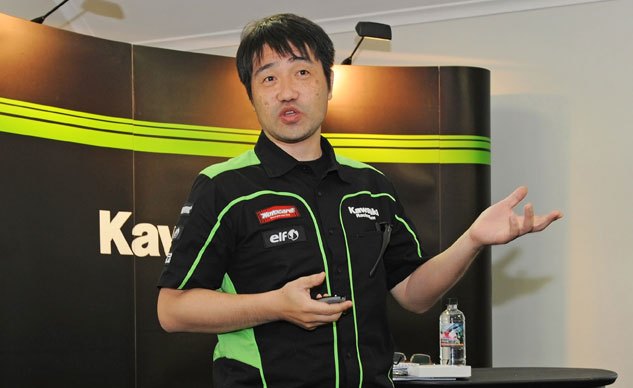
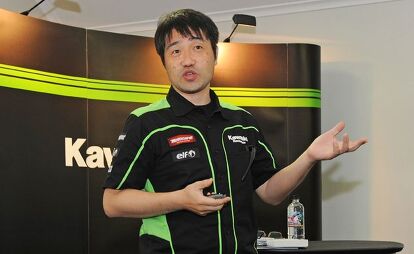














































































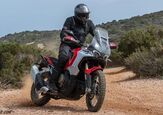



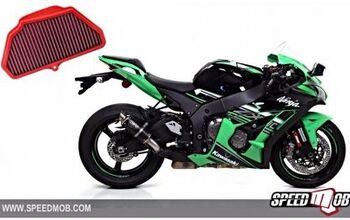
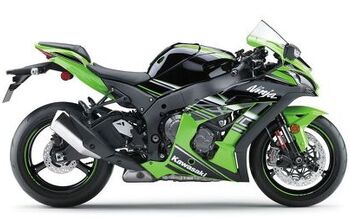
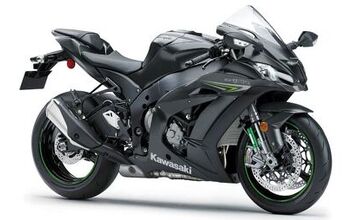












Comments
Join the conversation
I've been wondering what a "Balance-Free" shock is.
How about a caption contest:
"Hark, what light in yonder pit box breaks?
It is the east, and that umbrella girl is the (rising) sun!"
http://motorcycle.com.vsass...